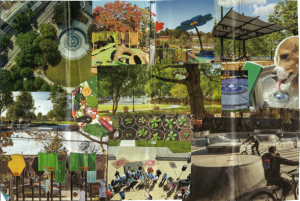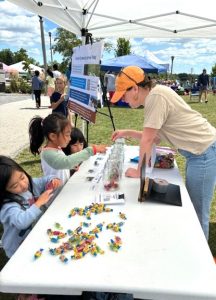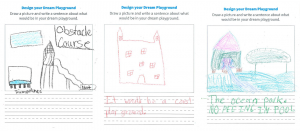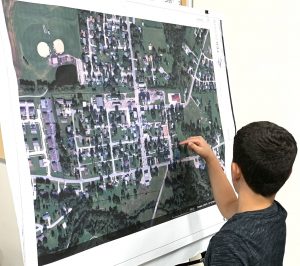The plans we develop for the future will directly impact the lives of today’s young people.
Youth engagement in urban planning is crucial for creating vibrant, inclusive, and sustainable communities. Involving young people in planning projects not only brings fresh perspectives and innovative ideas but also helps build future community leaders and stakeholders. This article will explore why you should prioritize youth engagement in your next community plan, identify the process MSA utilizes for engaging youth in our projects, and address common challenges in youth engagement.
Understanding the Importance of Youth Engagement
22.2% of the population of the United States of America is under the age of 18 (U.S. Census Bureau, 2020). However, this group does not have the right to vote, has limited access to transportation and economic opportunities, and is generally governed by adults in school institutions, at home, and in public spaces. Because of this they have, at best, limited decision-making power in current community planning structures. At the same time, young people are significant users of public space and have valuable knowledge about their communities. An opportunity exists to disrupt this power imbalance by connecting youth to learning experiences through community development project participation. Frameworks have been built and adopted to engage youth and student populations in local planning with many successful projects across the United States in the last two decades, yet youth participation in planning is still a relatively new concept.

Vision board created by a student at Vel Phillips Memorial High School as part of the planning curriculum.
As part of my exploration into this topic as a graduate student, I developed and delivered a curriculum to engage youth at Vel Phillips Memorial High School on the west side of Madison, Wisconsin. Over 10 weekly meetings, students learned about planning, worked through interactive activities, collected and analyzed data, and proposed strategies and solutions for the redevelopment of a struggling commercial area near their high school — ideas that were then presented to City of Madison planners as well as the mayor and deputy mayor of Madison. Due to the success of this project, the city is now utilizing this type of engagement within their new planning framework as they work to update city subarea plans.
This experience proves that youth have unique perspectives and innovative ideas that can lead to more creative and effective urban planning solutions. Engaging youth in planning processes also helps build future community leaders and stakeholders who are invested in the long-term success of their communities.
As you approach your next project, consider how you can implement youth engagement into the planning process. MSA has a variety of tools and approaches to assist, so choose what works within the context of your community or follow the steps outlined below.
Building Youth Engagement Strategies
1. Identifying Youth Stakeholders
Great engagement starts with partnerships. Like the relationships we build with our clients, working with youth is no different. It is imperative that a strong relationship built on trust is established to engage young people and youth groups in this work. The best place to look when identifying opportunities for youth engagement is to organizations who are already working with youth. These groups may include:
-
- Schools, colleges, and universities: Educational institutions are hubs of youth activity and can be pivotal in reaching a large number of young people.
- Youth organizations and clubs: These groups often have established networks and can facilitate engagement with their members.
- Online communities and social media groups: Leveraging the power of social media can help reach a broader and more diverse youth audience.

Voting with pom poms at Kids Fest in Menomonee Falls, WI.
It’s important to identify partners and stakeholders from a wide variety of backgrounds and neighborhoods, as well as those that may be traditionally left out of the planning process. Involving organizations serving youth with disabilities, for example, can lend essential perspectives and insights into the planning process and its outcomes.
2. Bringing Engagement Activities to Youth
When working with young people, your engagement activities need to match your audience. Traditional participation tools like community meetings or surveys may be obsolete or will need to be adapted in order to capture youth voices. Through our experience, the most engaging activities are those that are interactive and experiential. Additionally, when leading these engagements, it’s important to ensure inclusivity through hosting events at accessible spaces and using language that is understandable by different age groups. Here are some engagement activities MSA has led that we feel have the most impact.
-
- Developing planning curriculum: One of the most impactful places we can reach youth is the classroom. Providing or leading an urban planning focused lesson in schools can create strong engagement and learning opportunities for young people.
- Utilizing social media and digital tools: Platforms like Instagram and TikTok can be powerful tools for reaching and engaging youth. Surveys show that nearly 95% of teens use social media in the U.S.
- Organizing workshops and interactive sessions: Hands-on activities and interactive sessions can make the engagement process more appealing and effective. These can include activities like 3D modeling, creating vision boards with arts and crafts, or leading a walkabout/bikeabout of community areas important to youth.
- Developing an online mapping tool: An online mapping tool can provide convenient and accessible ways for youth to participate in planning processes. This type of activity can help identify community assets and issues important to youth.
- Conducting youth-centered interviews: Gathering a group of youth stakeholders in a focus group leads to insightful conversations on what matters most to young people.
- Leading pop-up booths at youth events: Youth-centered events like sports games or festivals are a great place to engage youth in your community project through a pop-up booth. A blend of educational material and engagement activities help inform and gather input from youth.

Kids are always happy to provide ideas, as shown here when asked to “Design your Dream Playground.”
3. Incorporating Youth Feedback Into Plans
Now that the participation process is over, it’s time to summarize feedback collected during the process and craft policies and designs guided by that public input and data. This feedback from youth should be systematically analyzed to identify common themes and actionable suggestions. These insights can then be woven into each plan’s objectives, strategies, and action items, ensuring that the youth’s perspectives are visibly reflected. Additionally, highlighting specific contributions from youth participants in the final document not only validates their involvement but also demonstrates a commitment to fostering a collaborative and inclusive planning process.

The best kinds of engagement include tangible outcomes that youth can point to. In the case of my engagement with high school students in Madison, the strategies and policies they proposed to the city planners, mayor, and deputy mayor were directly referenced in the final approved plan. This meant the world to those students to have their ideas recognized. This approach not only enriches the plan with fresh ideas but also empowers young people by showing that their voices matter in shaping the future of their communities.
Overcoming Challenges in Youth Engagement
Challenges faced in bringing youth engagement into planning projects often stem from the lack of understanding of why young people ought to be a part of the planning process in the first place. This leads to discounting youth voices and ignoring the need to involve a greater swath of the public, citing budget constraints or other rationale for doing so. Strategies to tackle these issues include providing education and raising awareness about the importance of bringing youth to the table in community decision-making. Steps towards raising awareness of youth voices might start with introducing a youth council to be present at community meetings.
Another challenge present in youth engagement may be a lack of trust or reputable relationship with the youth you are engaging., Because our youth represent a more vulnerable population, it is essential to establish a relationship with young stakeholders prior to launching them into the engagement process. With this in mind, it is helpful to connect with community partners who are actively working with youth first, in order to identify opportunities to engage youth through that existing relationship. In the long term, maintaining engagement by creating ongoing opportunities for involvement and feedback can sustain youth interest, participation — and most importantly — trust. Ensuring feedback loops and demonstrating the impact of youth input on planning decisions can validate their contributions and encourage continued engagement. By implementing these strategies, we can effectively engage youth and incorporate their valuable perspectives into the planning process.
Conclusion
Youth engagement in planning is essential for creating dynamic and inclusive communities. By understanding the importance of youth involvement and choosing strategies to engage youth within the context of your community, you can harness the potential of young people to shape their community and become strong advocates and leaders for their community’s future. It is clear, the future of our communities depends on the active participation and contributions of the next generation.
